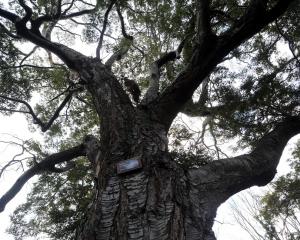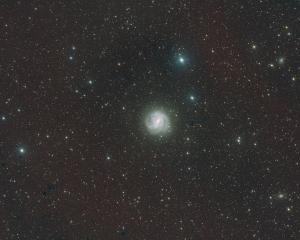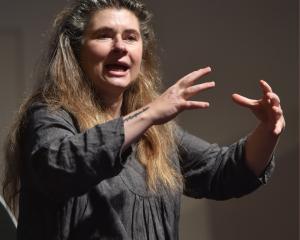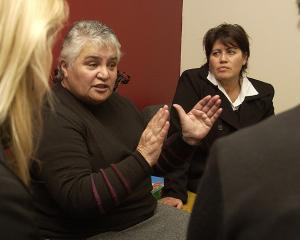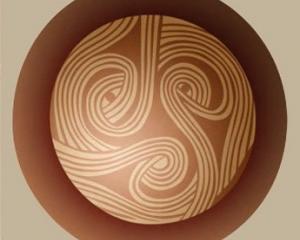
The Nevis, because of its isolation, seems to have dodged much of the lawlessness, drunken and violent excesses, dancing troupes, prostitutes and sly-grog shanties experienced by other goldfields. However, one writer in 1872 (The Evening Star, June 27), observed that men during winter went on drinking sprees because the frost prevented any work. The town, he considered, "is eminently a good drinking place".
It is not known when the first woman arrived or who she was but by 1866 women were living in the valley. The grand opening of a hotel in the township in 1866 drew a large number of women which, it was reported, was surprising given the remoteness of the valley.

The standard of miners’ huts had improved by 1871 from sod walls and bagging roofs (described as "old makeshift kennels") to iron houses and cottages. [Central Otago high country school teacher] Gavine [McLean] wrote that their homes were small and quite well built with four rooms, no bathroom, and an outside toilet:
Quite often, as the family increased, additional bedrooms with inferior studs were added. Most of the Nevis houses had been built towards the end of the 19th century and showed the effects of the summer heat and winter blizzards.
Furniture was simple, although some would be valued antiques today. Iron beds were often old with knobs missing and a seating problem would be solved with a long wooden form behind the table. There would be a stove, years old, which stood on legs and provided warmth in winter for all the family because they could sit all around it. "Cow chips" (manure) supplemented the coal: miners working on the peat bogs dried the peat and used it for fuel.
Families had their morning wash outside in a water tub and in winter the ice had to be hammered until it broke. Hands were dipped gingerly into the icy cold water and a little splash was directed to the eyes and mouth. This lick and a promise brought the wash to a swift finish. Except for the hotel, washing was done outside by the women and they used an outdoor copper on cold days to heat the water. The hotel had a washhouse with a copper and tubs. Monday was always washing day.
The ability of most women on the goldfield to manage is to be marvelled. Money was often scarce, especially in winter when some of the men were unemployed. Nothing was ever wasted. The women also knew how to make a piece of meat delivered weekly last the whole week and milk was used as a basis for many meals.

Nevis children were remarkably resilient. They made the best of where they lived and showed that they, too, could excel despite the isolation. One child, an unnamed girl, her family and the township must have been incredibly proud when her black-and-white map of New Zealand in the Education Exhibition was singled out for praise at the prestigious New Zealand and South Seas Exhibition in 1890. Her map was described in an Evening Star newspaper supplement as one of the neatest on display.
An insight into the lives of the children can be gleaned from the weekly assortment of letters from children which The Otago Witness started publishing in 1886. "Dot’s Little Folk" gave rural children an opportunity to tell other children about their lives and interests. The first correspondent from the Nevis was 9-year-old Annie Elliot, the youngest daughter of William and Helen Elliot, then living at The Crossing. In her second letter in September 1887, Annie wrote that she had to walk the three miles (nearly 5km) to school on her own because she was the only school-aged child living at The Crossing. She could play the concertina and the accordion and a little on the fiddle, which she would very much like to learn. She also enjoyed visiting her married sister in Cromwell because "it is so quiet at the Nevis". A sad little letter in 1892 says how much she misses her "dear Dad", who had died 17 months earlier.

Towards the end of the 1890s children writing to Dot started using noms de plume, which makes it difficult to identify them but, over the years, more than 20 children writing to Dot lived in the Nevis. Frequent letters came from "Buffalo Bill", whose job was to milk the cow morning and night; "Early Riser", whose family’s cow broke down the fence and cleaned up all the turnips; "Chestnut", who received the highest mark in her class in the mid-term exams; "Olympic", who loved playing ping-pong and had to milk two cows before going to school; and "White Cape Broom", who won two prizes at the school picnic sports day. There were others such as "Fairy Dell", "Blood, Bone and Beauty", "Snowball", "Gardener", "Bookkeeper" and "Fairy Firefly".
Books they read were listed and "Chestnut" proudly wrote in 1914 that the school library had 38 books. They wrote about the annual school concert after which every child was given a present from the Christmas tree followed by the school prizegiving.

The family garden was important with the children listing what was grown — turnips, beetroot, parsnips, carrots, radishes, lettuces, strawberries, cabbages, onions and potatoes — although produce was often frosted in spring.
Isolated Nevis was not spared from the invasion of rabbits in Central Otago in the 1870s and 1890s, which turned the land into a desert. They demolished treasured vegetable gardens despite protective fencing. But Nevis people regarded rabbits as a mixed blessing. They invaded gardens but they also gave miners employment during the hard winter months. Rabbits were hunted by men and children using dogs, ferrets and traps with poison laid in early spring. Ivy McLean remembered as a child picking up dozens of frozen rabbit carcasses, while a group of four men netted 30,000 skins after six months working in the Upper Nevis. Jack and Mick McLean (brothers of Ian) along with Sam Graham spent nine weeks in 1919 catching rabbits on Craigroy Station. They used the old pollard poisoning method, where wheat bran or oats poisoned with phosphorus was rolled into balls and dropped into shallow holes which the rabbits dug up. They caught more than 11,000. There would have been more but a heavy fall of snow prevented them recovering the carcasses. The men received £12 10s for 100 rabbits.
A story told by Jack McLean involved two rabbit hunters who had a dispute over a block, each claiming the other was encroaching on the other’s territory. The case was taken to court. The magistrate asked about boundary lines and one replied, "Well, mine reaches from the Siberia to the North Pole" (two well-known landmarks in the area). The man on the bench looked puzzled and commented, "I didn’t know that there were rabbits there!"

Daniel and Ellen Scally of the Shamrock Hotel lost four of their children to an outbreak of diptheria in 1874. The oldest was 7, the youngest just under 18 months. They died within two weeks of each other. A year later Ellen died, leaving an infant daughter, and, shortly after that, Daniel sold the hotel along with its general store, butchery and bakery and moved to Cromwell.
Moving patients out of the Nevis was also difficult, especially in winter, as miner Malcolm Macdonald and his wife Myra found when their younger son, Alexander, swallowed a coin which lodged in his throat. The nearest hospital where the coin could be extracted was in Dunedin. It was the middle of winter and his mother and eldest sister forced their way through the snow on horseback to Cromwell to catch the train to Dunedin. Myra described the journey as "horrendous".

Communication with the world outside Nevis was also hazardous. As far back as 1864 there was a proposal to connect Dunedin with the various goldfields by electric telegraph but the Nevis was not included, probably because of its remoteness. Mail deliveries started twice weekly in 1864 but much to the disgust of the Nevis population they were reduced in 1867 to once a fortnight. A weekly service was reintroduced in 1872. Contractors using packhorses had to provide waterproof coverings for the mailbags, while those using wheeled vehicles had to supply secure lockers. They were also fined if they were late leaving or arriving at the post office with the mail unless there was a good reason. Winter snow often prevented the mailman from getting over the Carrick Range. The average cost of a letter to the Nevis was 3s 4½d compared with 1s 2d to the Dunstan and was another burden the Nevis people had to bear.

Installation was completed in July 1897, with a single wire over about 29km, in some places less than 2m from the ground. (It was thought that winter breakages could be prevented if the wire was covered by snow, giving protection from the blizzards that swept the mountain. It did not always work). Later, the tops of schist rocks were used for metal insulator bolts, which can still be seen today. The service was intermittent with a high maintenance and the telephone cables were removed in the 1980s.




